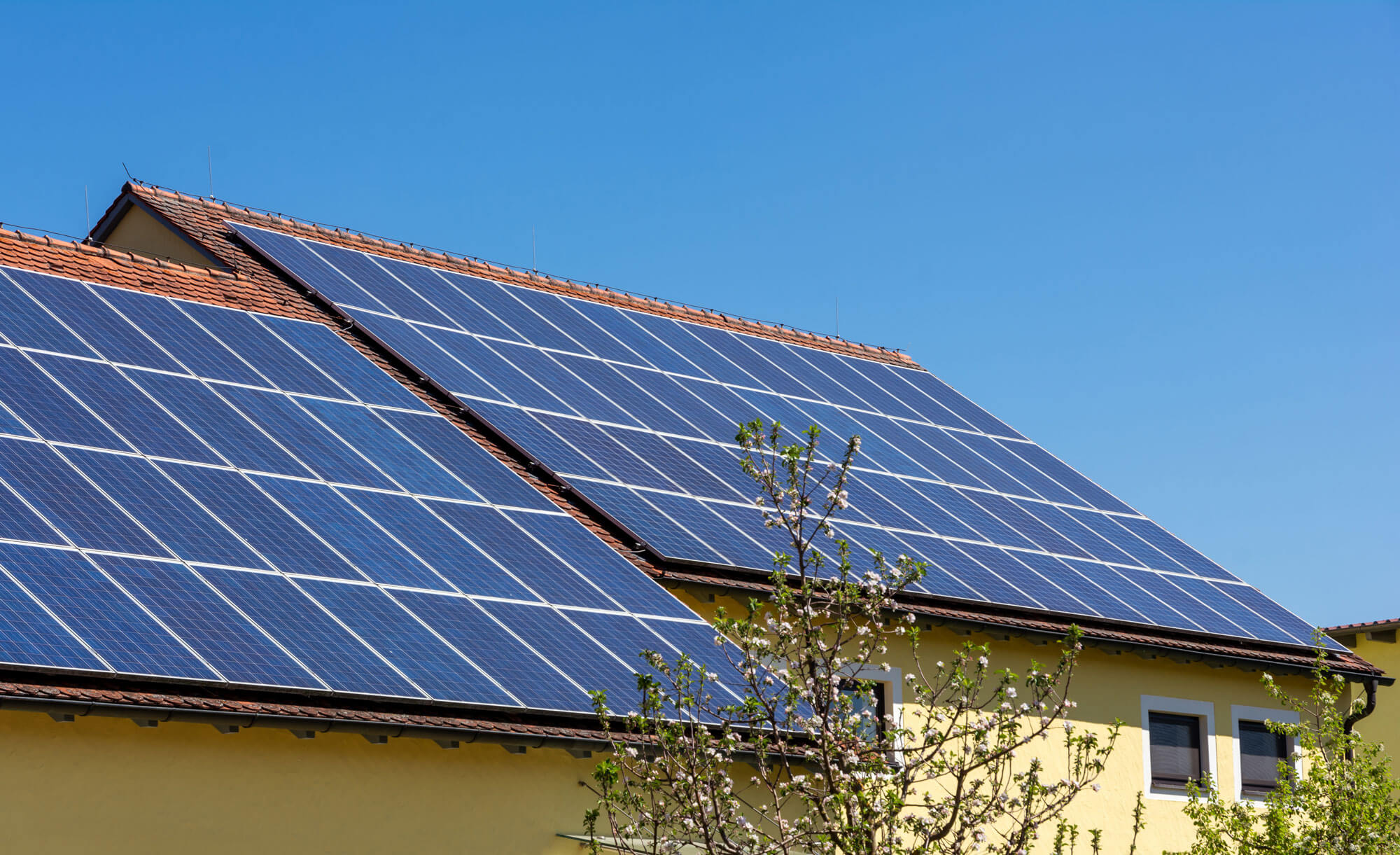What is solar?
The sun emits tiny packets of energy called photons; every hour, enough photons reach the surface of Earth to generate sufficient solar energy to satisfy global energy needs for an entire year.
When light hits a solar panel, it reacts with silicon crystals in each solar panel to produce an electric current – essentially creating its own power station. This electric current can then be converted into useful energy for powering your home or business.
What is photovoltaic technology?
‘Photo’ = light
‘Voltaic’ = electricity
Photovoltaic (otherwise known as PV) technology is the term used to describe the hardware that converts solar energy into usable power, generating energy from sunlight.
At the heart of this technology is PV panels. These panels consist of a series of cells which are usually made of silicon – the second most abundant material on earth. All these cells have two layers of semiconductors: one positively charged, and one negatively charged.
When light shines on the semi-conductor, the electric field across the junction between these two layers causes electricity to flow, generating DC (direct current). Inverters then transform this into a safer AC (alternating current) for use in your home or office.
The greater the intensity of the light, the greater the flow of electricity. But contrary to popular belief, a PV system does not need bright sunlight to operate. It can also generate electricity on cloudy days. Due to the reflection of sunlight, days with slight cloud can even result in higher energy yields than days with a completely cloudless sky.
What is photovoltaic technology?

‘Photo’ = light
‘Voltaic’ = electricity
Photovoltaic (otherwise known as PV) technology is the term used to describe the hardware that converts solar energy into usable power, generating energy from sunlight.
At the heart of this technology is PV panels. These panels consist of a series of cells which are usually made of silicon – the second most abundant material on earth. All these cells have two layers of semiconductors: one positively charged, and one negatively charged.
When light shines on the semi-conductor, the electric field across the junction between these two layers causes electricity to flow, generating DC (direct current). Inverters then transform this into a safer AC (alternating current) for use in your home or office.
The greater the intensity of the light, the greater the flow of electricity. But contrary to popular belief, a PV system does not need bright sunlight to operate. It can also generate electricity on cloudy days. Due to the reflection of sunlight, days with slight cloud can even result in higher energy yields than days with a completely cloudless sky.
Although the principle of harnessing energy from the sun is the same, there are many ways that a PV system can be installed. There are also several different factors to consider in order to determine which size and system will be best suited to your home or business.
For example, larger inverter models are ideal for commercial projects whilst roof furniture and any other sources of shading need to be considered when designing modules in a residential system.
There are three different types of PV system:
Other systems:
To determine the best type and size of system for your home or business, a period of power data logging at the target property will need to be undertaken by an installer using a power data logger.
Energy Storage
During the day, solar panels can capture more energy than a standard household can consume. However, with KODAK Storage Systems, you can store and save any surplus energy generated for use throughout the night, to avoid wasting any power. When the days are shorter over the winter months, this can be particularly beneficial. And, if you’ve still got enough electricity to keep your house powered, storage systems allow you to sell any extra power back to the grid!



